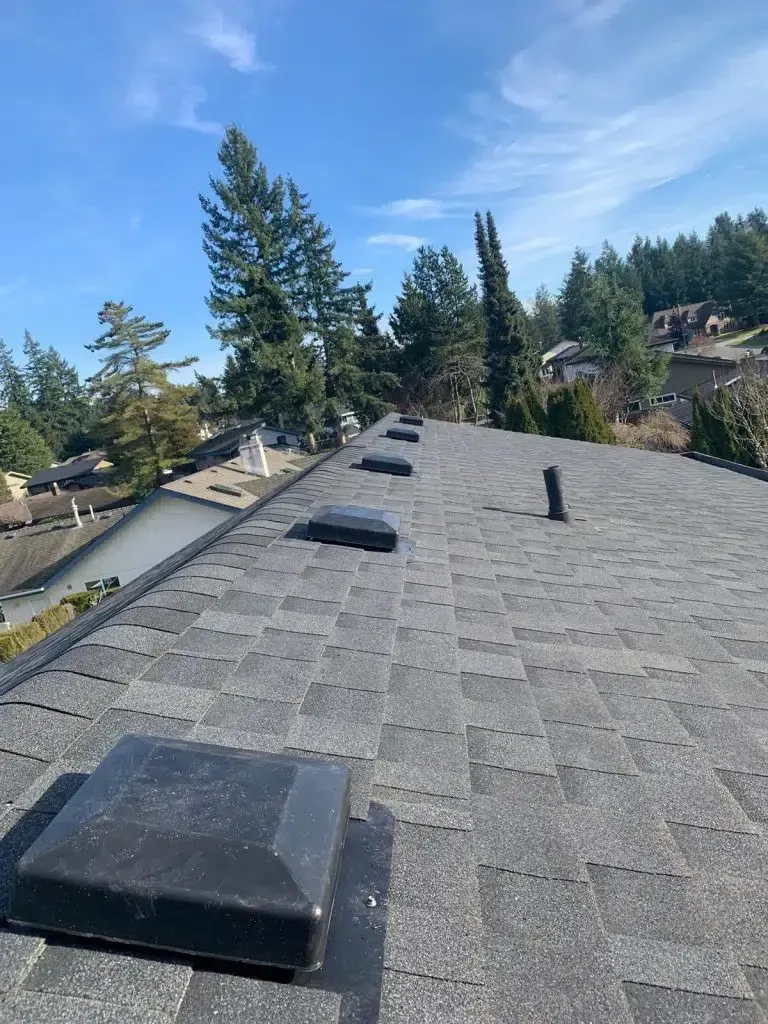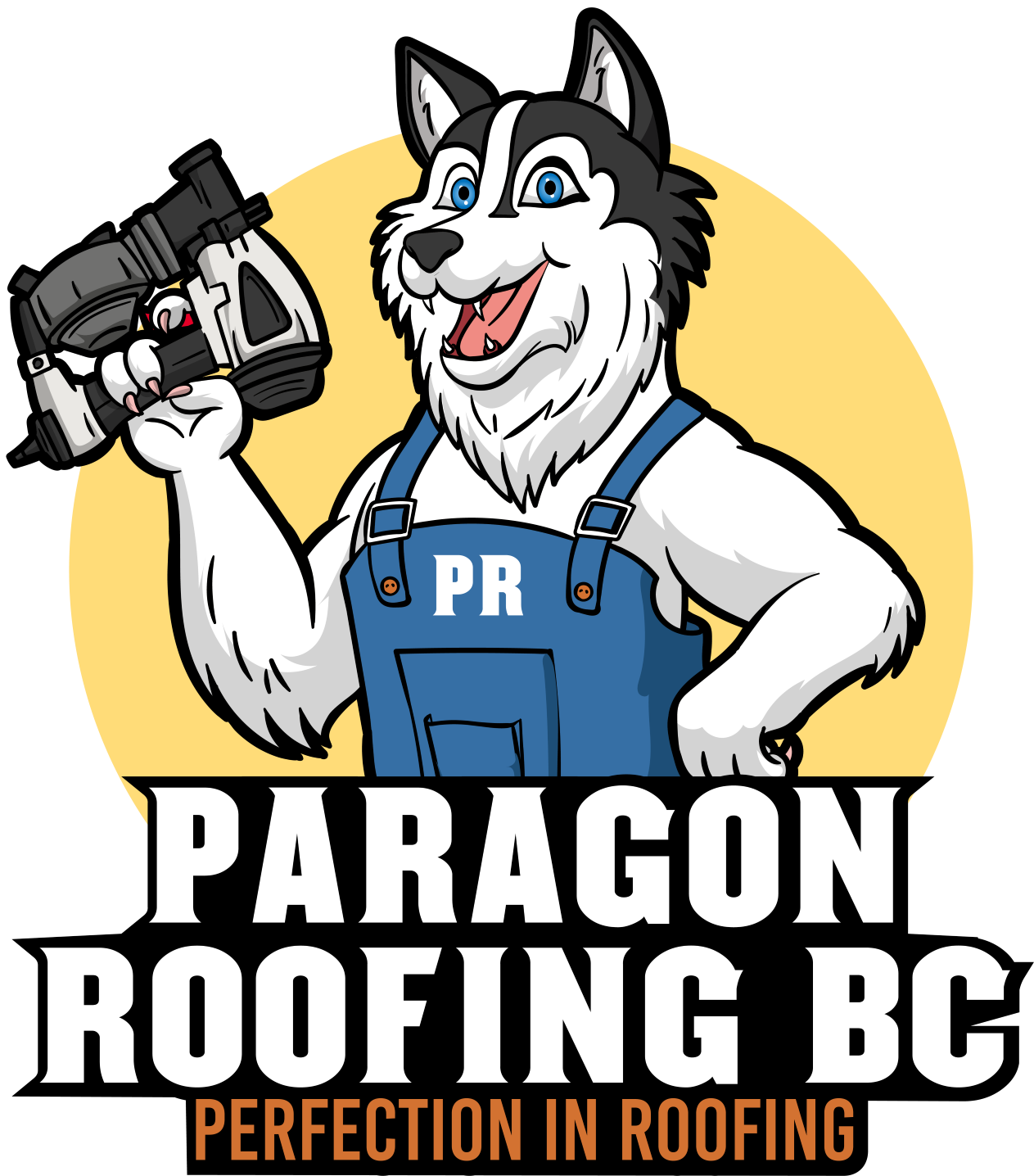Seasonal Roofing Checklist for Burnaby Homeowners
Seasonal Roofing Checklist for Burnaby Homeowners
Need the fastest answer? A Seasonal Roofing Checklist for Burnaby Homeowners means inspecting after storms, cleaning gutters quarterly, removing moss every spring, and booking a pro roof check each fall—simple habits that keep the roof ahead of Burnaby’s relentless rain.
- Inspect shingles after every major storm.
- Clear gutters at each season’s turn.
- Treat and scrub moss every spring.
- Schedule fall professional inspection.
| Season | Key Task | Why It Matters |
|---|---|---|
| Spring | Moss removal | Prevents moisture rot |
| Summer | Seal flashings | Dry weather cures sealant |
| Fall | Gutter flush | Stops winter ice dams |
| Winter | Snow load watch | Averts structural stress |
Burnaby isn’t just “rainy Greater Vancouver.” It’s a steep-sided bowl bordered by ocean winds to the west and snow-dusted peaks to the east. That geography funnels 2,300 mm of annual precipitation across your shingles—almost two and a half times Toronto’s total. As lead installer at Paragon Roofing BC, I’ve patched, replaced, and rescued enough rooftops to map storms by sound. Below is a season-by-season road map—2,000 words of practical, local detail—to keep that Burnaby roof tight, tidy, and trouble-free.
Why Burnaby Roofs Age Faster than You Think
Rain arrives in November at a ten-inch-a-month sprint, then lingers as mist until late May. Meanwhile, our winters seldom deep-freeze; instead, they hover just above zero, inviting moss to photosynthesize year-round. Those conditions accelerate five villains:
- Capillary creep: Wind-driven rain needles beneath shingles.
- Moss rhizomes: Tiny rootlets lever tabs apart.
- Freeze-thaw micro-cracks: Nighttime dips below 0 °C widen granule fractures.
- Salt-laden gusts: Fraser River outflow deposits corrosive halides on fasteners.
- UV fatigue: Summer’s surprising 15 hours of daylight cooks asphalt binders.
Spring (March – May): Erase the Winter’s Scars
1. Patrol for Post-Winter Bruising
Walk the perimeter first. Look for granule piles in downspouts—shingles did the shedding for you. Binocular-scan the roof plane; any dark blotches often signal missing granules rather than mildew.
2. Moss & Algae Eradication
Burnaby’s cloudy spring acts like a greenhouse for Bryophyta. Mix 50/50 white vinegar and warm water, spray, wait 20 minutes, and gently brush. Bleach cooks shingles; skip it.
Pro tip: Swap to algae-resistant shingles rated “AR” when sections finally need replacement. They embed copper granules that slowly leach biocides, keeping regrowth at bay.
3. Gutter Deep-Clean and Hanger Check
A clogged downspout can dump 1,000+ litres of overflow water during a single April cloudburst. Clear debris, run a hose test, then tighten gutter hangers. Sag equals standing water equals rust.
4. Attic Moisture Audit
Spring’s dew point rises. Slide a hygrometer behind insulation; readings above 65 % RH hint at poor ventilation. Install a ridge vent or at least add soffit vents before midsummer.
5. Flashing Reseal
Butyl tape softens below 10 °C, so early May’s warmer afternoons are perfect for pressing new strips beneath lifted step flashing.
Summer (June – August): Upgrade During the Dry Window
1. Plan Re-Roofing Jobs Now
Dry stretches average only eight rain days in July. Shingle adhesives cure fully, and crews aren’t dodging puddles. Lock in contractors by late spring—Paragon’s calendar fills fast.
2. Inspect Solar Blisters
Asphalt can bubble in direct 30 °C heat. Tap blister tops with a screwdriver handle; hollow thunks predict pop-offs come autumn gales. Replace single tabs before they evolve into leaks.
3. Fortify Valley Protection
Install peel-and-stick ice-and-water membrane even though Burnaby snow seldom lingers. Remember February 2023’s freak 40 cm dump? Ice dams love unprotected valleys.
4. Tune Up Ventilation
Temperature swings between attic and ambient should stay within 10 °C. Add a low-amp solar vent fan or enlarge gable vents. Cooler attics prolong shingle life by years.
5. Paint or Replace Flashings
Galvanized flashings oxidize white in seaside humidity. Wire-brush rust, prime, and top-coat with acrylic. Prefer 24-gauge pre-painted steel on replacements; aluminum pits near ocean spray.
Fall (September – November): Storm-Proof Before “Big Muddy”
1. Perform Leaf-Drop Gutters Maintenance
Burnaby Mountain’s maples shed earlier than oaks. Flush gutters twice: early October and again after the final drop. Consider gutter guards but avoid foam inserts—they clog with cedar needles.
2. Seal Pipe Boots
Autumn’s 15 °C average is the Goldilocks midpoint for elastomeric caulk—neither brittle nor runny. Replace any cracked neoprene boots; they’re sub-$20 insurance.
3. Tighten Exposed Fasteners
Metal roofs on North Road often loosen under summer expansion. A cordless impact driver with a clutch prevents overtightening; switch washers if they’ve UV-cracked.
4. Trim Overhanging Limbs
Aim for a 2 m clearance from roof edge. Falling branches accounted for 12 % of Paragon’s emergency calls last October.
5. Schedule Pro Inspection
Certified roofers see micro-faults you won’t. We photograph every square metre, annotate, and deliver a no-fluff report so homeowners can budget repairs before winter closes the door.
Winter (December – February): Monitor, Don’t Panic
1. Watch Snow Load, Not Flakes
Burnaby averages just 24 cm snowfall in January, yet wet Pacific snow weighs 2–3 × drier Prairie powder. Clear if accumulations exceed 20 cm; use a roof rake from ground level.
2. Check Attic for Drips During Thaws
Warm fronts race in overnight, melting snow and driving moisture backwards under shingles. A single bucket catch in the attic beats drywall repair later.
3. Keep Vents Ice-Free
Exhaust vents can frost shut, forcing moisture back inside. Tap them gently; never chip aggressively.
4. Stock Emergency Supplies
A 10 m roll of tarp, a box of 3″ capped roofing nails, and a battery flashlight live in my truck all winter. Copy the kit.
5. Document Everything for Insurance
Take photos before, during, and after storms. Insurers appreciate timestamps over anecdotes.
Local Materials Cheat-Sheet
| Material | Burnaby Benefit | Trade-Off |
|---|---|---|
| Algae-resistant shingles (AR) | Stops moss growth | 10 % price premium |
| Standing-seam metal | Sheds rain fast | Louder in hail |
| SBS-modified asphalt | Flexible in cold snaps | Heavier; needs beefier decking |
| Cedar shakes | Breathable; aesthetic | High upkeep in damp climate |
DIY vs. Professional: Draw the Line
Safe DIY
- Gutter scooping with stable footing
- Vinegar moss spray from extension pole
- Visual inspections using binoculars
Hire a Professional
- Valley membrane installation
- Chimney re-flashing
- Full-deck replacement
- Structural sag remediation
- Permit-triggering alterations (skylights, dormers)
Cost Snapshot for 2025
| Service | Typical Cost (Burnaby) | Frequency |
|---|---|---|
| Annual inspection | $225–$350 | Every fall |
| Gutter cleaning | $150–$250 | Twice yearly |
| Moss treatment | $300–$500 | Every 2–3 years |
| Full asphalt re-roof (1,800 sq ft) | $10 k–$14 k | Every 18–22 years |
| Metal conversion | $25 k–$32 k | Once in 50 years |
Tools That Earn Their Keep
- Telescoping inspection camera: Peeks at chimney caps without climbing.
- Adjustable roof rake: Removes wet snow from ground level.
- Pump sprayer with fine nozzle: Delivers moss solution evenly.
- Headlamp with red light mode: Saves night vision in the attic.
- Mil-spec knee pads: Because Burnaby shingles shred jeans fast.
Final 12-Month Action Plan
| Month | Quick Win | Why It Matters |
|---|---|---|
| January | Check attic for drips | Thaw cycles spike leaks |
| February | Tighten interior duct collars | Stop moist air infiltration |
| March | Spray moss on north face | New growth still tender |
| April | Flush gutters & downspouts | Prepares for heavy May showers |
| May | Inspect flashings for lift | Warmer temps set sealant |
| June | Review ventilation airflow | Summer heat starts |
| July | Plan repairs & book contractor | Peak dry window |
| August | Replace worn shingles | Adhesives cure fastest |
| September | Trim branches | Prevent storm debris |
| October | Professional inspection | Catch issues before rains peak |
| November | Clear gutters again | Leaf-drop surge |
| December | Stock emergency kit | Storm season begins |
Frequently Asked Questions
How often should Burnaby roofs be replaced?
Asphalt roofs last 18–22 years here due to high rainfall. Metal doubles that.
Do gutter guards eliminate cleaning?
No. They reduce debris but still need seasonal flushing.
Will a ridge vent suffice without soffit vents?
Never. Ventilation works like a chimney—needs intake and exhaust.
Parting Advice from the Paragon Crew
Roofs win or lose by inches, not metres. One lifted shingle, one clogged elbow, one untreated palm-sized moss patch—any can blossom into a living-room waterfall by next November. Follow this checklist faithfully, and you’ll sidestep the common Burnaby roof tragedies we rescue every rainy season. When in doubt, call Burnaby roofing maintenance experts ; ladders forgive no errors.
Stay dry, stay safe, and may your shingles rest flat through every Pacific squall.
References
- Environment Canada climate normals for Burnaby (1992–2021).
- Weather-And-Climate.com, “Burnaby average annual precipitation”.
- WeatherSpark, “Average monthly rainfall Burnaby”.



